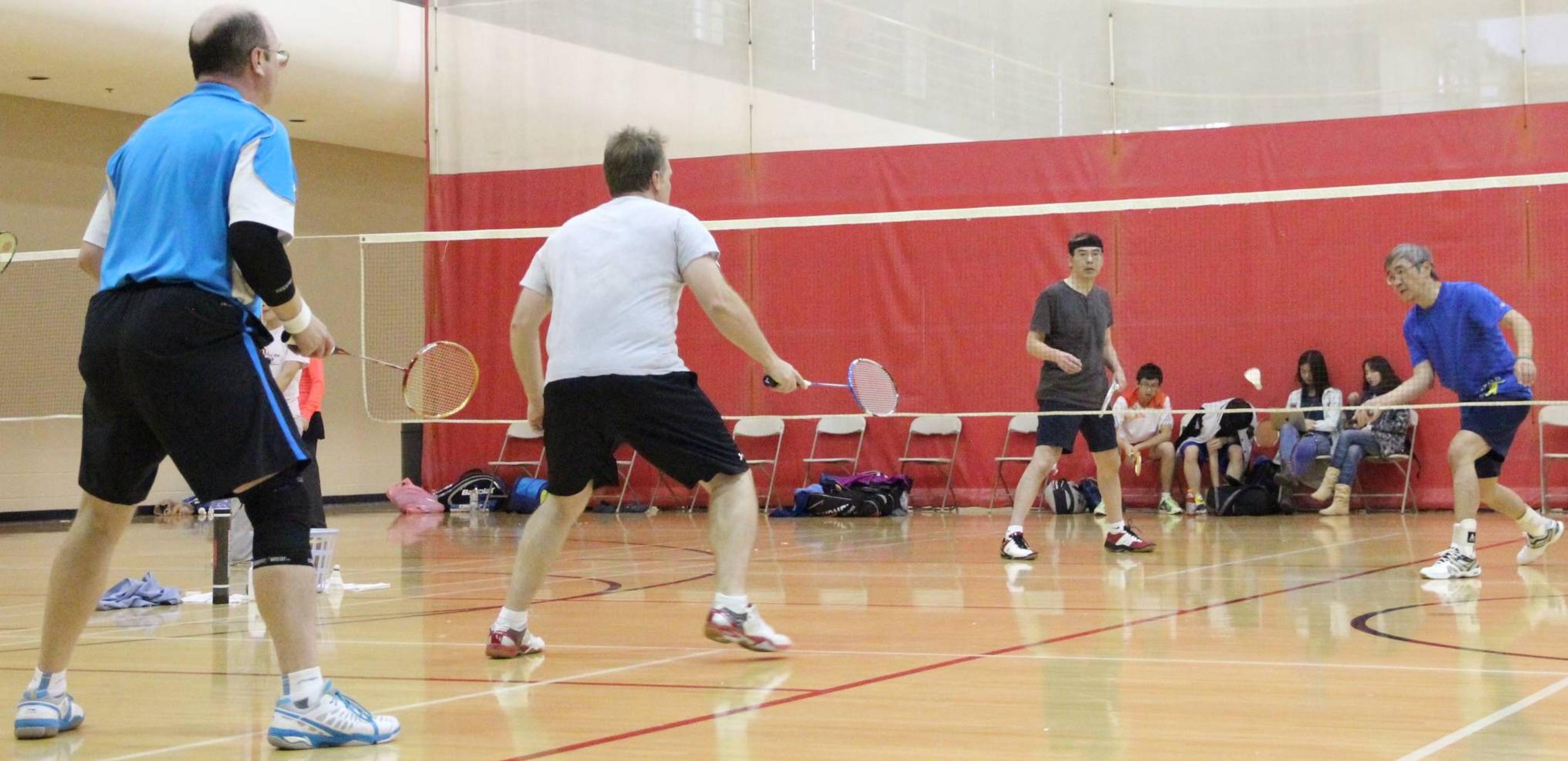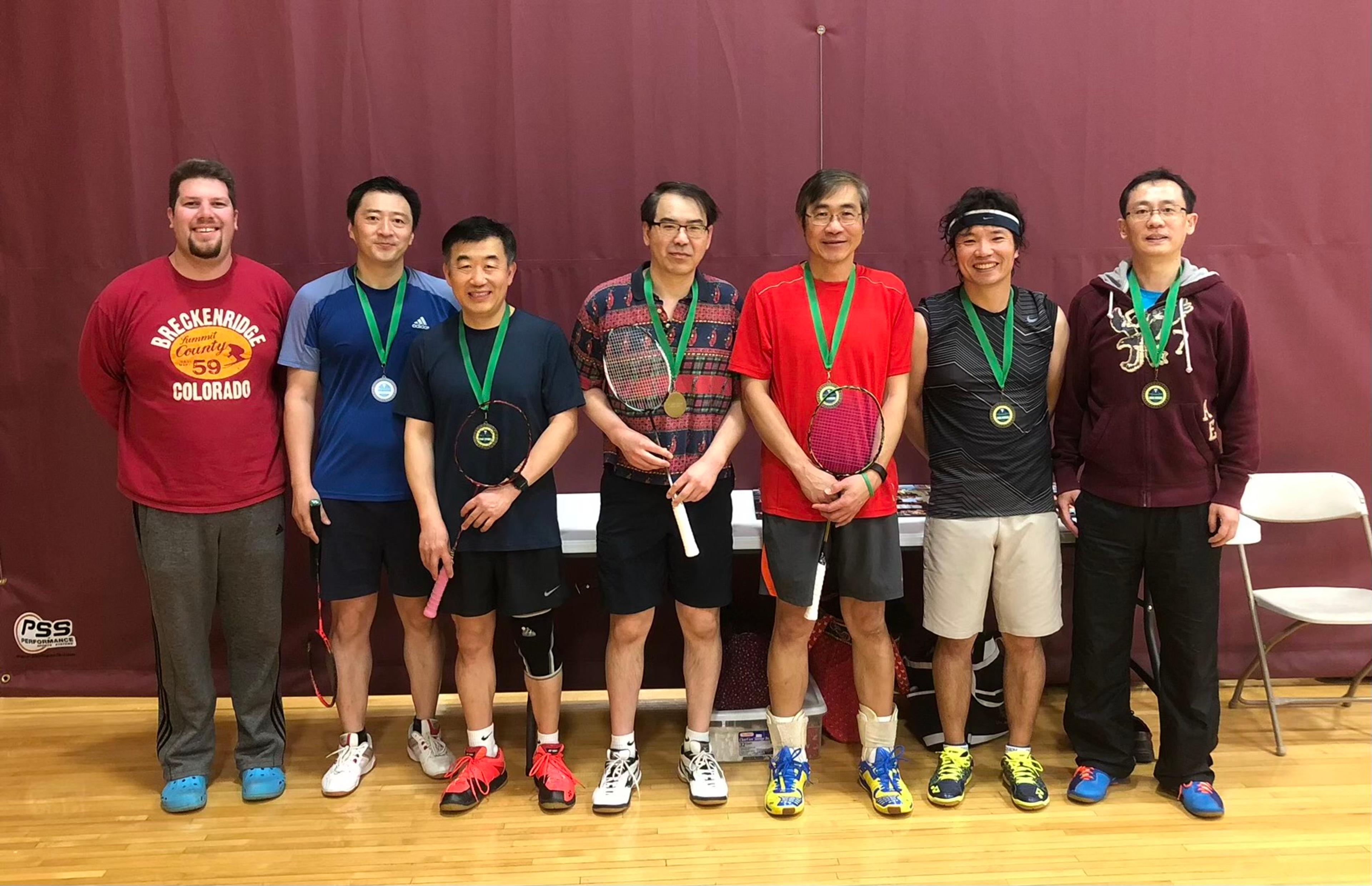Find Your Fit: Badminton is a Full-Body Workout with Mental and Cognitive Benefits
Jake Newby
| 4 min read

Before Pickleball was everyone’s favorite racket-based sport, there was badminton.
Badminton is believed to have been played for more than 2,000 years in countries like China, India and Greece. The objective is like tennis in that players try to hit a birdy (or shuttlecock) over a net and onto their opponent’s court without their opponent returning it with their own racket. The game can be played one-on-one or in teams of two.
Badminton is an Olympic sport, but you don’t have to be an Olympian to play.
“It’s played by people of all ages, all different skill levels and all different countries,” said Ann Arbor resident Kim Yeow, who plays three times a week at Ann Arbor’s Meri Lou Murray Recreation Center.
The physical and cognitive benefits of Badminton
Badminton is a fun, competitive, low-impact way to stay active and fit, regardless of age. Yeow, 65, has played since he was a school-aged child in his home country of Malaysia. His decades of experience have allowed him to identify the aspects of the game that he thinks are particularly good for the body and mind.
“Like tennis and pickleball, it requires a lot of hand-eye coordination,” Yeow said. “You need good wrist movement, there’s a lot of wrist work. And good movement in general because you have to move around the court. You need good footwork to cover the entire court. You have to glide at times.”
A systematic review of badminton’s health benefits published in 2022 stated the sport is beneficial in terms of improving:
- Hand-eye reaction time
- Muscle coordination
- Cognitive functions
- Alertness
- Concentration
A new 2024 study examining badminton’s ability to slow cognitive decline and dementia reported that regularly playing recreational badminton for several hours a week could positively impact modifiable risk factors for dementia, and that engaging in at least 30 minutes of moderate-intensity badminton per week could help prevent cognitive decline.
Physically, all that movement makes for a great full-body workout. Studies have found badminton to have a beneficial effect on heart and lung function, speed and flexibility. It also led to significant improvements in flexibility in some participants. Badminton requires quick changes in direction and rapid arm swings from a wide range of body positions.
“It involves your entire body, so when you move forward and backwards, your legs are always in motion,” Yeow said. “You work your hitting arm probably more than your non-hitting arm. But the non-hitting arm also moves and sways to keep the whole body in balance. When we hit, sometimes we have to arch our back and bend low to retrieve the shuttles. So, I would say it’s a whole-body workout.”
Playing doubles in badminton is less physically demanding for older adults, making it a great option to minimize injury risk, especially if you have certain physical ailments or a long injury history.
Badminton’s communal characteristics and effect on mood
When your fitness activity of choice is a sport, you’re naturally going to bond with others. This has been Yeow’s experience since he started playing badminton regularly in Ann Arbor roughly 20 years ago.
“What makes it fun to most of the players is the community,” Yeow said. “Not only do we go in and play a game and exercise, but it’s also a place to meet friends. Those friendships extend outside of the badminton court.

They haven’t done it in a few years, but Yeow said regular Meri Lou Murray Recreation Center badminton players have gotten together for summer barbecues in the past.
One study found that students who performed badminton exercises significantly decreased levels of depression and anxiety and improved their self-esteem.
What to know before you give it a go
Badminton rackets can range in price from about $50 to $200 or $300. Yeow noted that although most recreation centers with badminton courts also supply their own rackets, they’re not of very high quality, in his experience.
Equipment wise, Yeow said he wears ankle braces to prevent him from twisting his ankle, which he’s done before. He said you do see some people wear knee braces or compression sleeves as well. When it comes to playing as a beginner, Yeow said it’s important not to go too hard to fast.
“If you’re trying to get into the game, the first few times, don’t go all out,” he said. “If you’re not used to the game, you might be really sore the next day. Take it easier until your body is used to that kind of workout. You can then increase your intensity as you go along.”
The athletic clubs and recreation centers of many Michigan communities include badminton courts. Click here to search for one near you.
More from the Find Your Fit series:
- Find Your Fit: Qigong’s Low-Impact, Full-Body Movements and Mindfulness Techniques Can Benefit Older Adults
- Find Your Fit: What You Need to Know About Rucking, from a Michigan Resident Who Fell in Love with it
- Find Your Fit: WERQ Dance Fitness is for Everybody and ‘Every Body’
Photo credit: Kim Yeow





